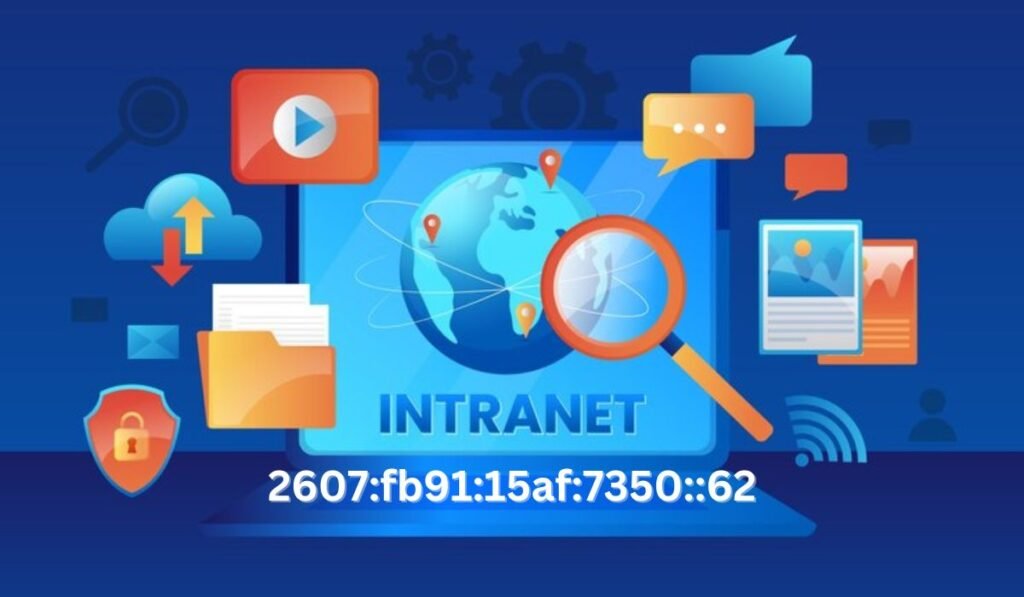In today’s digital world, IP addresses are like fingerprints—unique to each device connected to the internet. One such mysterious entity is the IP address 2607:fb91:15af:7350::62, an example of an IPv6 address. But what exactly is this string of numbers and letters, and why does it matter? In this deep dive, we’ll uncover the secrets behind IP addresses, particularly the significance of this specific address, and explore the broader implications of the transition from IPv4 to IPv6.
What Is an IP Address?
An IP address, or Internet Protocol address, is a numerical label assigned to every device connected to a network that uses the Internet Protocol for communication. Think of it like a home address for your computer or smartphone. Just as mail needs a physical address to get to your house, data transmitted over the internet needs an IP address to reach its destination.
There are two main types of IP addresses: IPv4 and IPv6. While IPv4 addresses are familiar in their format—four blocks of numbers like 192.168.0.1—IPv6 addresses are more complex and capable of providing vastly more combinations, making them critical as the number of internet-connected devices skyrockets.
The Rise of IPv6: Why It Matters
The world has billions of devices, and each needs a unique IP address to connect to the internet. IPv4, which uses 32-bit addresses, offers approximately 4.3 billion unique addresses. Although that number seems large, we quickly ran out, thanks to smartphones, laptops, tablets, smart home devices, and the growing Internet of Things (IoT).
Enter IPv6, a 128-bit addressing system capable of providing an almost unlimited number of addresses (about 340 undecillion to be exact). This massive increase allows for the continued growth of the internet without the worry of address exhaustion.
Breaking Down IPv6 Addresses
At first glance, an IPv6 address like 2607:fb91:15af:7350::62 may seem like a confusing jumble of numbers and letters. But it follows a logical structure. An IPv6 address is divided into eight groups of four hexadecimal digits, separated by colons. However, the address can be simplified by replacing sequences of zeros with a double colon (::), as seen in our example.
Here’s a breakdown of this IPv6 address:
- 2607: This is the network prefix, indicating the initial portion of the address allocated by the service provider.
- fb91:15af: These segments can identify subnetworks within the main network.
- 7350: This might represent a specific subnet within the ISP’s allocated range.
- ::62: The final block identifies the interface or device within the network.
Understanding the 2607:fb91:15af:7350::62 IP Address
So, what does this specific IP address—2607:fb91:15af:7350::62—tell us? While the first segments often relate to a regional or service provider’s assigned range, the remaining portions could point to a more localized network or device. By examining this, network administrators and even geolocation services can infer various details about the owner of this address.
Geolocation tools can sometimes pinpoint the location of an IP address, offering information such as the region, city, or even neighborhood where it’s being used. However, the precision isn’t always perfect due to factors like proxy servers, VPNs, and mobile networks.
The Purpose of IP Address 2607:fb91:15af:7350::62
This particular address could be part of a residential internet service, belonging to a user in a specific geographic region. ISPs (Internet Service Providers) assign either static or dynamic addresses. Static addresses remain constant, while dynamic addresses change periodically.
Whether 2607:fb91:15af:7350::62 is static or dynamic would depend on the internet service plan—some companies offer static IPs for businesses or specific needs, while most home users are assigned dynamic IPs.
Privacy Concerns with IP Addresses
Can an IP address, like 2607:fb91:15af:7350::62, reveal personal information? While an IP address can provide clues about the general location and ISP, it doesn’t directly reveal who you are. However, when combined with other data, IP addresses can be used for tracking and profiling, raising concerns about privacy.
Using tools like VPNs (Virtual Private Networks) can help mask your real IP address, providing an additional layer of security.
Tracing and Tracking IP Addresses
There are various tools available online for tracing IP addresses. Entering 2607:fb91:15af:7350::62 into one of these tools can provide some basic information, such as the country or city where the IP address is registered. However, tracing someone based solely on their IP address can be challenging and often unethical without consent.
IPv6 in Everyday Use
You might not realize it, but IPv6 is already part of your daily life. Many devices, from smartphones to gaming consoles, now support IPv6, allowing them to seamlessly connect to the growing IPv6 internet. The address 2607:fb91:15af:7350::62 represents a single point in this vast network, serving a specific user or device.
Dynamic vs. Static IP Addresses
A static IP address remains consistent over time, while a dynamic one changes periodically. Whether 2607:fb91:15af:7350::62 is static or dynamic would depend on its allocation by the ISP. Static IPs are often used for servers or services requiring constant access points, whereas dynamic IPs are more commonly assigned to residential users.
Geolocation and Its Accuracy
IP geolocation services try to map IP addresses to physical locations. However, accuracy can vary. For example, while 2607:fb91:15af:7350::62 might be traced to a city or region, pinpointing the exact house or device is often more difficult.
Challenges with IPv6 Implementation
Despite its benefits, IPv6 adoption has faced challenges, particularly regarding infrastructure upgrades. Many ISPs, businesses, and users are still in the process of transitioning, which can be costly and time-consuming. However, the transition is inevitable as the world’s demand for internet connectivity continues to grow.
The Future of IP Addressing
With IPv6, the world has a nearly limitless pool of IP addresses, but that doesn’t mean the evolution of internet protocols stops here. In the future, we may see even more sophisticated systems that support the next generation of internet use cases, such as smart cities and enhanced IoT devices.
How to Check Your Own IP Address
Want to know your own IP address? There are plenty of tools online that can show both your IPv4 and IPv6 addresses. It’s important to understand what your IP address says about your internet connection and take steps to protect your online privacy.
Conclusion
The world of IP addresses is vast and intricate, and addresses like 2607:fb91:15af:7350::62 represent just a small part of this complex ecosystem. Understanding IPv6 is crucial for navigating the future of the internet, ensuring that we remain connected as the digital landscape continues to expand.
FAQs
What is the difference between IPv4 and IPv6?
IPv4 uses a 32-bit address format, while IPv6 uses a 128-bit format, offering exponentially more unique addresses.
Can someone track me using my IP address?
While an IP address can reveal your general location, it doesn’t provide specific personal information.
How can I change my IP address?
You can change your IP by restarting your router, using a VPN, or contacting your ISP.
Why is IPv6 important for the future of the internet?
IPv6 solves the problem of address exhaustion posed by IPv4 and supports the growing number of internet-connected devices.
Can a specific IP address reveal personal information?
On its own, an IP address reveals little personal data, but it can be used in conjunction with other information for tracking.
Also Read More:
Construction Erp Software News.ticbus.com: A Comprehensive Guide


